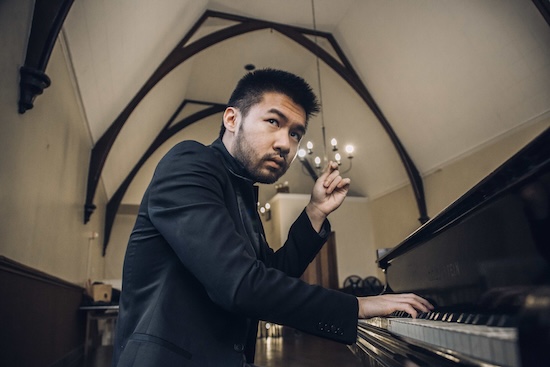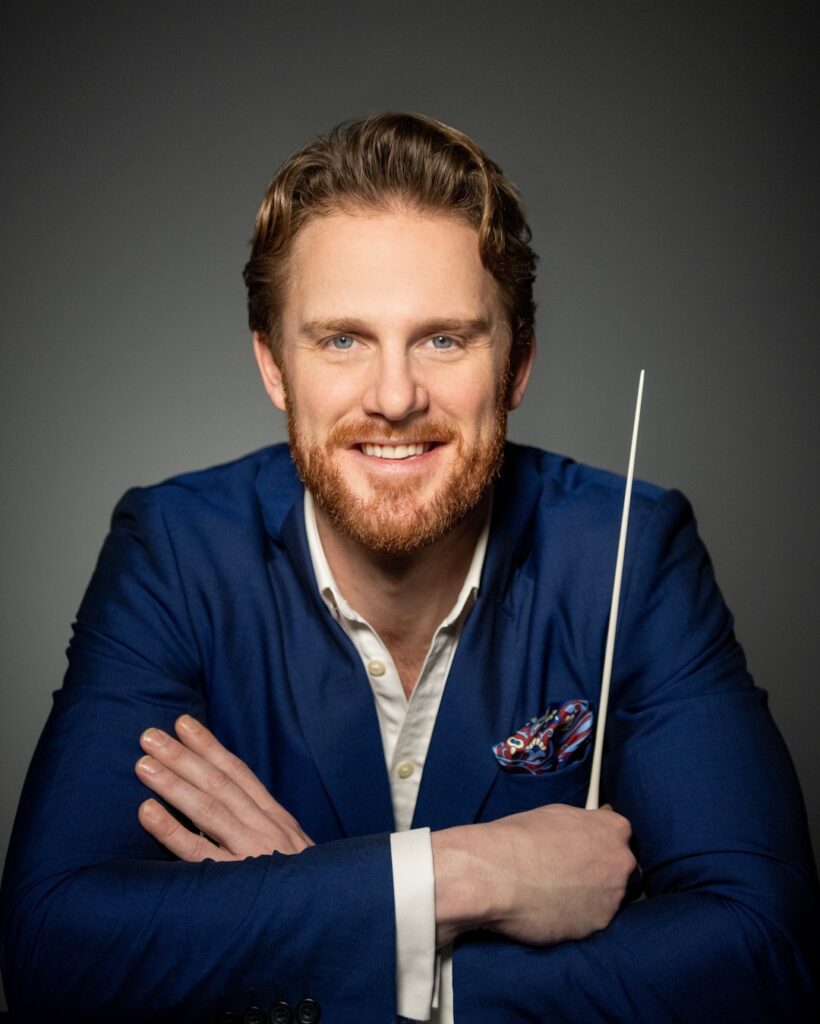Pianist Tao lights up a new year with Jacksonville Symphony at Kravis

Conrad Tao performed music of Gershwin and Rachmaninoff with the Jacksonville Symphony Tuesday night at the Kravis Center. Photo: Brantley Gutierrez
Here’s another entry in the ledger for anyone who wants to feel old: Gershwin’s Rhapsody in Blue turns 100 this year.
The composer’s Jazz Age masterpiece received its world premiere February 12, 1924, at Aeolian Hall on Manhattan’s West 43rd Street. To celebrate the anniversary, the Jacksonville Symphony gave a magnificent performance Tuesday at the Kravis Center in West Palm Beach with the American pianist Conrad Tao.
The orchestra, now in its 73rd season, qualifies as venerable by Florida standards. It’s a good size ensemble, without the thinness in string ranks that is a flaw of many regional orchestras. The Jacksonville Symphony musicians played throughout the evening with firm precision, a rich sound and supple agility.
Under music director Courtney Lewis, the orchestra gave a vigorous account of Gershwin’s familiar quasi-concerto. Trombones, muted trumpets and clarinet played with a jazzy freedom and an edge of dance-band raucousness. Strings played with plush tones in the work’s big melodies.
Tao drew a huge sound from the piano that could easily be heard over the surging orchestra. Playing in a pointed and articulated manner one moment and with headlong abandon the next, his hard-charging performance gave the work a living, breathing vitality. The final notes drew an immediate ovation from the Kravis Center crowd.
As an encore, Tao played his own transcription from a recording of “Over the Rainbow” by jazz pianist Art Tatum. In this sensitive, improvisatory performance, the famous tune persisted through jazzy harmonies and elaborate runs.
Rachmaninoff’s Piano Concerto No. 4 flopped on its 1927 premiere in Philadelphia and remiss the least played of all five of Rachmaninoff’s works for piano and orchestra.
But if the work lacks the incomparable melodies and obvious drama of Rachmaninoff’s popular Second and Third Concertos, it bears the unmistakable stamp of the composer in its turns of phrase, orchestration and virtuoso flash.
Tao and the orchestra gave a fine performance, the soloist drawing out the composer’s smoky melodies with a rhythmic freedom that gave them life without letting them lose shape. The technical demands of this difficult work appeared to be no obstacle at all to him. In moments of fortissimo drama, his tone in rapid octave passages easily pierced the sound of the surging orchestra.
If the big melodies were not quite as memorable as those of Rachmaninoff’s other concertos, the orchestra did them justice, with violins playing with soaring tones on their top string and dark luster in their lower register.
The contemporary American composer Jessie Montgomery trained as a violinist, and her affinity for the instrument shows up in her short work Strum. The composition revels in the capabilities of the stringed instruments, from being plucked like guitars to producing high, singing melodies.
Starting with spare pizzicato, Strum opens in a folksy manner that seems to indicate it would follow the homespun path of some 20th century American music, with broad melodies that evoke prairies and country dances. But it quickly became more complex and engaging, with high shards of melody and contrasts in texture between the dry pizzicato and moments when the violins take flight in melody.
Music director Lewis opened Carl Nielsen’s Symphony No. 4 in an appropriately abrupt manner, not waiting for the welcoming applause to die out before summoning up the symphony’s sharp, violent opening.
Composed and given its premiere during World War I, the symphony crackles with the sounds of battle. Given the title “The Inextinguishable” by the composer, the symphony was intended to express the persistence of life through adversity.
The performance embraced the contrast between the violence in the full orchestra and the moments of solitude, in which practically the only sound was a single flute or cello or bassoon. Lewis drew full power from the orchestra in moments of symphonic grandeur, with the brass instruments making their presence felt without overpowering the other sections.
In the Poco allegretto, winds played the gentle melody with genial charm, with balanced tones and natural phrasing. The third movement, with its stark string music, came off with searing intensity, with phrasing that made the most of the dissonances over a rumbling timpani.
The concluding Allegro came off with robust high spirits. Strings played with incisive precision in intricate rapid passages. Brass and winds brought celebratory warmth to their climactic melody, as the dueling double timpanists pounded away.
The Kravis Center’s classical series continues with the Orpheus Chamber Orchestra and pianist Nobuyuki Tsujii at 2 p.m. Saturday, Jan. 20. They will perform Chopin’s Piano Concerto No. 1, an orchestrated version of Schumann’s Carnaval and the world premiere of a work by Nathalie Joachim. kravis.org
Posted in Performances
2 Responses to “Pianist Tao lights up a new year with Jacksonville Symphony at Kravis”
Leave a Comment
Wed Jan 10, 2024
at 10:46 am
2 Comments







Posted Jan 11, 2024 at 6:47 am by Nidhi Every
Bravo!
Posted Jan 14, 2024 at 6:56 pm by Warren H. Kelly
Unfortunately, the piano was not in tune. I hope the Kravis Center will not allow such a lapse again.